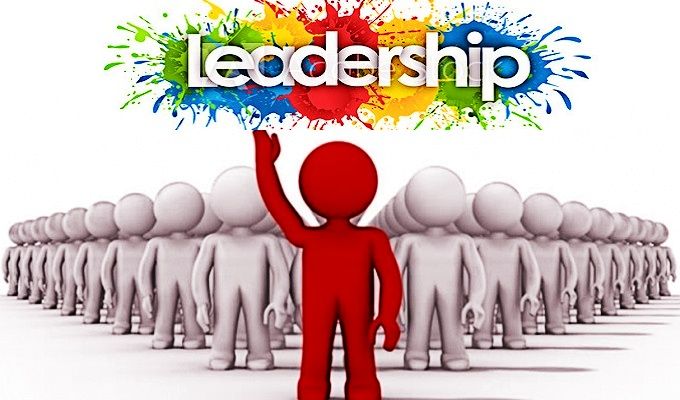
Leadership Styles and Their Impact on Business Success
“Leadership Styles and Their Impact on Business Success”
Leadership is a pivotal element in the success of any business, as it directly influences how teams function and achieve their goals. Effective leaders inspire, motivate, and guide their teams, which can profoundly enhance an organization’s overall performance and culture. Recognizing and understanding different leadership styles is crucial for anyone currently in a leadership position or aspiring to take on such a role. This article explores various leadership styles, analyzing their effects on business success and providing insights into how they can be leveraged to foster growth and efficiency within an organization.
Understanding Leadership Styles
Leadership styles are diverse, each characterized by unique approaches and impacts on organizational dynamics. For example, transformational leaders inspire and motivate their teams by fostering a vision for the future. In contrast, laissez-faire leaders adopt a hands-off approach, allowing team members significant autonomy in their roles. Each style influences team morale, productivity, and overall effectiveness in different ways. Understanding these styles in detail can help leaders choose the most effective approach for their specific goals and organizational context.
Transformational Leadership
Characteristics of Transformational Leaders
Transformational leaders are renowned for their capacity to inspire and motivate employees through a compelling vision of the future. They actively encourage their team members to surpass their own expectations by fostering an environment of growth and innovation. Charismatic and proactive, these leaders drive positive change and cultivate a strong sense of purpose and commitment within their teams.
Benefits of Transformational Leadership
This leadership style creates a supportive and motivating atmosphere that enhances job satisfaction and fosters a sense of belonging among employees. Prioritizing professional growth and recognizing individual achievements drive higher levels of employee engagement and dedication. Consequently, organizations with transformational leaders experience not only improved overall performance but also greater employee satisfaction and loyalty.

Credit: economictimes.indiatimes.com
Transactional Leadership
Key Traits of Transactional Leaders
Transactional leaders emphasize a clear framework of goals, tasks, and organizational structures to ensure efficiency and productivity. They rely heavily on a system of rewards and penalties to motivate their teams, thereby aligning individual performance with the organization’s objectives. This leadership style characterizes a strong focus on short-term tasks, constant performance monitoring, and strict adherence to established procedures and policies.
Advantages and Disadvantages
Transactional leadership, which focuses on structured tasks and rewards, often drives high productivity and sets clear expectations for employees. However, this approach can stifle creativity and innovation, as it emphasizes routine and conformity over original thinking. Additionally, if not complemented with more supportive or transformational leadership styles, it can lead to decreased employee morale and engagement, as workers may feel undervalued or overly controlled.
Autocratic Leadership
Defining Autocratic Leadership
Autocratic leaders make decisions unilaterally, often relying on their judgment without seeking much input from team members. This leadership style is characterized by a top-down approach, where leaders maintain strict control over all aspects of the organization and expect compliance from their subordinates. Consequently, team members have limited autonomy and are typically expected to follow directives without question, which can lead to a lack of creativity and lower morale among employees.
Situations Where Autocratic Leadership Works
This leadership style is particularly effective during crises or when quick decisions are crucial, ensuring swift and decisive action. However, more reliance on this approach can stifle collaboration and hinder creative problem-solving among employees. Ultimately, finding a balance is essential to maintain both efficiency and a healthy, innovative work environment.

Credit: scientificworldinfo.com
Democratic Leadership
Core Principles of Democratic Leadership
Democratic leaders prioritize the input of their team members, actively seeking their opinions and ideas during the decision-making process. By fostering an environment where everyone’s voice is heard, they cultivate a sense of ownership and responsibility among the group. This collaborative approach not only enhances team cohesion but also leverages the diverse perspectives and skills within the team to make more informed and effective decisions.
Impact on Employee Morale
Democratic leadership tends to foster a sense of value and respect among employees, leading to increased job satisfaction and higher retention rates. This inclusive approach encourages team participation and collaboration, enhancing overall morale and motivation. However, the emphasis on collective input can slow down decision-making processes, potentially affecting efficiency and responsiveness in fast-paced environments.
Laissez-Faire Leadership
What is Laissez-Faire Leadership?
Laissez-faire leaders take a hands-off approach, allowing team members to make their own decisions and work independently. This style is built on trust and confidence in the team’s abilities, empowering individuals to take initiative and utilize their expertise. As a result, team members often feel more valued and motivated, fostering a sense of ownership and creativity in their work.
When to Use Laissez-Faire Leadership
This style can be particularly effective with highly skilled and self-motivated teams, as it allows them the freedom to innovate and make decisions independently. However, if team members are not adequately prepared for such autonomy, it may lead to a lack of direction and cohesion, potentially causing confusion and misalignment. Ensuring that the team has clear goals and adequate support is essential to maximizing the benefits of this approach.

Credit: economictimes.indiatimes.com
Servant Leadership
Servant Leadership Explained
Servant leaders place the needs of their team members above their own, dedicating themselves to supporting and empowering those they lead. By prioritizing the growth and well-being of their team, they cultivate a strong sense of community and collaboration within the organization. This approach not only enhances individual performance but also drives collective success, creating a more cohesive and motivated workforce.
Benefits to Organizational Culture
Servant leadership fosters high levels of employee engagement and loyalty by prioritizing team members’ needs and growth. This leadership style cultivates a supportive and inclusive environment where employees feel genuinely valued and empowered. As a result, it strengthens organizational culture and boosts overall morale, driving more outstanding commitment and productivity within the team.
Situational Leadership
Adapting Leadership Styles to Situations
Situational leadership requires leaders to adjust their approach based on the unique needs and dynamics of their team and the context they are operating within. By recognizing when different leadership styles are most appropriate, leaders can better support their team members, address challenges, and capitalize on opportunities. This adaptability enhances their effectiveness, enabling them to navigate various scenarios and drive better outcomes for the organization.
Examples of Situational Leadership
A Situational leader is adept at tailoring their leadership style to the context of the situation, opting for a more directive approach during crises to provide clear guidance and swift decision-making. Conversely, in scenarios focused on team development, this leader may shift to a supportive style, fostering collaboration and growth among team members. This flexibility in leadership not only helps in effectively navigating immediate challenges but also in building a motivated and skilled team over time, thereby boosting overall performance and morale.

Credit: thriveglobal.com
Impact of Leadership Styles on Business Success
How Different Styles Affect Performance
The choice of leadership style can significantly influence business outcomes. Transformational leadership, characterized by inspiring and motivating employees, fosters a culture of innovation and drives sustainable growth by encouraging creative thinking and engagement. On the other hand, autocratic leadership, with its emphasis on centralized decision-making, can provide swift and decisive actions in emergencies, ensuring that critical decisions are made quickly and effectively when time is of the essence.
Case Studies of Successful Leaders
Examining real-world examples of successful leaders provides valuable insights into the practical application of various leadership styles. For instance, Steve Jobs, known for his visionary and often authoritative approach, demonstrated how a bold vision and uncompromising standards can drive innovation and success. In contrast, Warren Buffett, with his democratic and collaborative style, shows how fostering trust and empowering team members can lead to sustainable growth and effective decision-making.
Choosing the Right Leadership Style
Factors to Consider
Choosing the right leadership style involves evaluating a range of factors, such as the organization’s objectives, the unique attributes of the team, and the specific challenges that need addressing. For example, a collaborative approach might be ideal for a team that thrives on input and consensus. At the same time, a more directive style could be necessary in high-pressure situations requiring quick decision-making. Leaders must carefully analyze these elements to select a style that aligns with their goals and effectively addresses their team’s needs.
Aligning Leadership Style with Company Goals
Aligning leadership style with the company’s strategic objectives ensures that the leadership approach supports overall business goals by fostering a cohesive vision and clear direction. This alignment can enhance effectiveness by promoting consistent decision-making and empowering teams to work towards common objectives. As a result, it drives long-term success by creating a resilient and adaptable organization capable of navigating challenges and seizing opportunities.

Credit: toolshero.com
Leadership Development Programs
Importance of Leadership Training
Leadership development programs are essential for nurturing influential leaders by providing structured training and resources that enhance leadership capabilities. These programs help individuals build the skills and knowledge necessary to lead successfully, including strategic thinking, effective communication, and decision-making. Additionally, they offer opportunities for networking and mentorship, which further support the growth and development of emerging leaders.
Effective Leadership Development Strategies
Effective leadership development strategies encompass mentorship, training workshops, and experiential learning, each providing unique opportunities for growth and skill enhancement. Mentorship offers personalized guidance and support, training workshops deliver structured learning on key topics, and experiential learning immerses individuals in real-world scenarios to build practical skills. Investing in these programs fosters a robust leadership pipeline and ensures long-term organizational success.
Challenges in Leadership
Common Leadership Challenges
Leaders often face various challenges, including managing team dynamics, which requires balancing diverse personalities and skills to foster a cohesive unit. Navigating organizational change demands adaptability and strategic thinking to ensure smooth transitions and minimize resistance. Maintaining motivation involves continuously inspiring and engaging team members to sustain high performance and commitment toward organizational goals. Recognizing and addressing these challenges is crucial for effective leadership, as it ensures that leaders can guide their teams through complexities while achieving desired outcomes.
Overcoming Leadership Obstacles
Successful leaders develop strategies to overcome obstacles by fostering open communication, setting clear goals, and providing continuous feedback. By promoting transparency and dialogue, leaders ensure that team members feel heard and understood, which can preempt and resolve issues more efficiently. Setting clear goals provides direction and focus, while continuous feedback helps adjust strategies in real time, ensuring that challenges are managed effectively and progress is sustained.

Credit: smallbusiness.chron.com
Future Trends in Leadership
Emerging Leadership Styles
New leadership styles are emerging in response to changing workplace dynamics, reflecting the need for more adaptable and inclusive approaches. Hybrid leadership, which combines elements of transformational, transactional, and situational styles, is gaining popularity as organizations adapt to more flexible work environments and diverse teams. This trend emphasizes the importance of agility, empathy, and collaboration in effectively managing both in-person and remote workers.
Impact of Technology on Leadership
Advancements in technology are fundamentally changing the dynamics of leadership, enabling leaders to interact with their teams in more efficient and innovative ways. Tools like AI provide valuable insights and automation, while remote collaboration platforms facilitate seamless communication and coordination regardless of geographical barriers. As these technologies continue to evolve, they will further influence and transform leadership practices, driving new strategies and approaches for managing and motivating teams.
FAQs
What is the most effective leadership style?
There is no one-size-fits-all answer to this question. The most effective leadership style depends on the context, team, and specific challenges faced. A good leader adapts their style to the situation.
How can transformational leadership benefit a company?
Transformational leadership can drive innovation, increase employee engagement, and improve overall performance. It fosters a positive work environment and encourages professional growth.
When should autocratic leadership be used?
Autocratic leadership is best used in crises where quick decision-making is essential. It can also be effective when managing inexperienced teams that require clear direction.
What are the drawbacks of laissez-faire leadership?
While laissez-faire leadership can empower teams, it can also lead to a lack of direction and accountability if team members need to be sufficiently motivated and skilled.
How does servant leadership impact organizational culture?
Servant leadership promotes a supportive and collaborative culture, leading to high employee satisfaction and loyalty. It emphasizes the well-being of team members, which can enhance overall performance.
What are the benefits of leadership development programs?
Leadership development programs help build essential skills, improve leadership effectiveness, and create a strong leadership pipeline. They support the growth and success of both individual leaders and the organization.
Conclusion
Understanding and implementing the right leadership style can significantly influence business success. By recognizing the strengths and weaknesses of various styles, leaders can adapt their approach best to meet the needs of their teams and organizations. Investing in leadership development and staying attuned to emerging trends will ensure that leaders are well-equipped to navigate the complexities of the modern business world.






